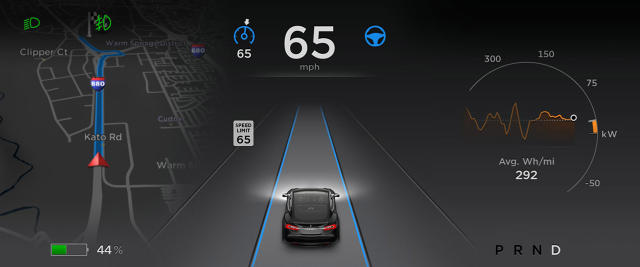What The Tesla Crashes Can Teach Us About The Future Of Self-Driving Cars
The journey to a future dominated by autonomous vehicles hit a few speed bumps recently, with news of not one but two crashes, one them fatal, involving Teslas operating in autonomous driving mode. The collisions raise questions about how far self-driving cars really are from being safe enough for widespread adoption, and if the issues—human or computer—should be a roadblock toward that goal.
“The technology isn’t ready. Evolution of the new technology has to unfold over time, and it’s hard to say how long that will take,” says Michael Clamann, senior research scientist at Duke University’s Humans and Autonomy Lab (HAL).
“For semi-autonomous cars, we need reliable systems that keep the driver aware of what is going on around them and that can quickly and effectively return control in the event of an emergency. For fully autonomous cars we need sensors and algorithms that are effective enough to work in all conditions and account for all possible contingencies. For both, we need a regulatory environment that sets standards for everyone’s safety.”
Clamann says that the two crashes show us that Tesla’s sensors and collision algorithms aren’t quite perfected yet.
The sensors in the cars are something that other researchers have noted as an issue as well. John Dolan, a principal systems scientist in the Robotics Institute at Carnegie Mellon University and expert in autonomous driving says that in an ideal situation a vehicle would have a number of different sensors including a GPS with lane-level localization, and a laser sensor that won’t be blinded by sunshine.

A GPS that could offer that kind of precision typically runs over $50,000, putting it out of the reach of the average consumer vehicle. Tesla has chosen to not include laser sensors in its vehicles, likely for the same reason.
In the case of the fatal Tesla crash, the car mistook the side of a white truck for a street sign, something that Dolan says might have not happened had a laser sensor been onboard as well.
“It would give you additional information. It would give you shape and outline information. So you would see something like an L shape object in your sensor,” says Dolan. “It’s always good to have more than one sensor certainly, in this case it would be more than two. I’m not saying that there’s an absolute guarantee, I’m saying that it will give you that additional shape information that is not present when your camera is whited out, or sunshine has caused it to not work properly”
He says that in general a laser sensor would be less noisy than a radar sensor, making it easier for the car to potentially distinguish between truck and sign. Important to also note: The driver of that car was reportedly potentially watching a Harry Potter movie on a DVD player when the car crashed. Tesla notes in its safety information for the autonomous feature that drivers need to keep their hands on the wheel at all times so they can take control if need be, although many have chosen to not heed that warning, even going as far as to climb into the backseat while their car is in motion.
“Elon Musk has said that he thinks that it will be possible to do autonomous driving without using a laser sensor, and while that may be true, we’re trying to use the full complement of sensors, or at least the 3 basic sensors: camera, radar, and laser in order to take advantage of of all their complementary strengths, says Dolan about his ongoing research.
“I think it’s reasonable to believe that the reason that Tesla didn’t put the laser in is because it’s not quite there in terms of expense. The radar has been automotive grade for a while, so that’s been inexpensive enough to include in cars, and cameras are quite cheap nowadays. The main issue with cameras is that you get a lot of information from them and you typically have to use a lot of computing to interpret the information. So there’s a bit of an issue there.”
Many companies, including Google, are working on their own laser sensors, so it’s realistic to think that their availability and price tag will improve over time.
“Despite the apparent success of semi-autonomous vehicles, they are still in a test phase. They are either being driven on closed tracks or by professional drivers. Some naturalistic studies are being performed under controlled conditions (e.g., Volvo’s Drive Me). It will be a while before these systems are safe,” Clamann says.
Dolan says that while the Tesla crashes are certainly concerning, he feels that autonomous vehicles still have a lot of promise.
“I think that we can learn from these things, and get incrementally better. I believe that the technology has been sufficiently shown to be viable that it’s not’s just going to be a matter of public revolution and pulling away from it entirely, that it’s going to be recognized as part of the growing pains of an immature technology.”
Fast Company , Read Full Story
(16)












